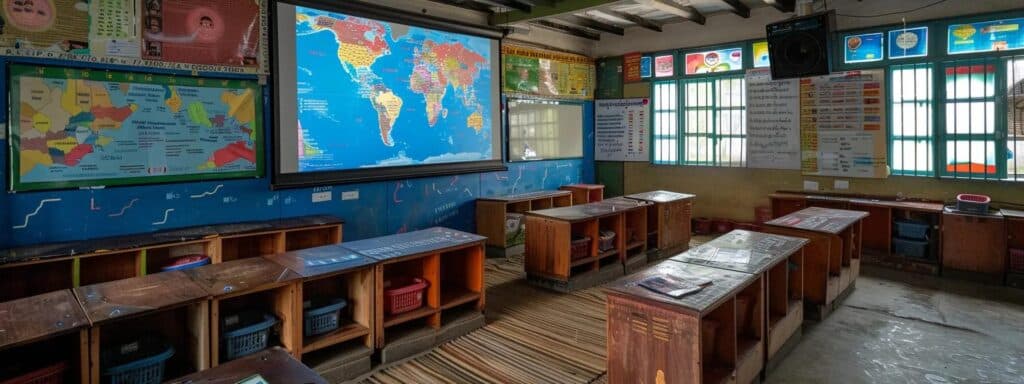How to Translate Rohingya by NAATI: Certified Translation Services and Process Guide
Translating documents to and from Rohingya is critical for ensuring clarity, cultural accuracy, and regulatory compliance—especially in legal, academic, and immigration contexts. Whether you’re submitting a visa application, enrolling in school, or responding to a government request, having your documents accurately translated can make all the difference.
As global migration and international engagement grow, so does the demand for certified translations. In Australia, this means working with professionals accredited by the National Accreditation Authority for Translators and Interpreters (NAATI). NAATI-certified translators adhere to rigorous standards for quality and reliability, which is essential when dealing with sensitive documents like birth certificates, driver licences, and official correspondence.
This guide breaks down everything you need to know about Rohingya translation—from its cultural and practical importance to the benefits of choosing certified professionals. You’ll also find practical advice on how to work with translators, what the process involves, how much it typically costs, and what to look for in a reliable provider.
Whether you’re part of the Rohingya community in Australia, a migration agent, or an organisation seeking accurate and culturally attuned translations, this article offers a helpful starting point.
Looking to get started with a translation right away? Upload your document and receive a certified quote in minutes.
What Is NAATI Certification and Why Is It Important for Rohingya Translation?
When it comes to translating official documents, certification isn’t optional—it’s essential. NAATI certification confirms that a translator is professionally qualified, linguistically accurate, and culturally competent. For Rohingya translation, this ensures that sensitive information is communicated with the precision and care it deserves.
NAATI (National Accreditation Authority for Translators and Interpreters) is the national standards body for language professionals in Australia. Certification through NAATI means that translators have passed comprehensive exams that test not only language fluency, but also their understanding of cultural nuance, professional ethics, and real-world translation scenarios. These include translating complex documents in contexts like immigration, healthcare, legal proceedings, and academia.
For institutions—such as the Department of Home Affairs, universities, or the courts—a NAATI-certified Rohingya translator provides assurance that the translated document can be trusted. This reduces the risk of misinterpretation and avoids costly delays in visa processing, school enrolments, or legal matters.
If you’re interested in the standards and processes behind NAATI testing, you can learn more directly from NAATI’s official certification guide.
What Does NAATI Certification Mean for Rohingya Translators?

For professionals working in Rohingya translation, becoming NAATI-certified is more than a qualification—it’s a recognised badge of excellence. Certification involves passing detailed assessments that test translation accuracy, cultural sensitivity, and ethical practice. It also requires translators to adhere to a strict Code of Ethics and Code of Conduct developed by AUSIT.
This certification ensures translators are proficient in both Rohingya and English, capable of preserving legal intent and conveying meaning across different cultural and linguistic contexts. For official documents—such as birth certificates, police clearances, or visa support letters—accuracy isn’t just preferred, it’s legally required. Certified Rohingya translators are trained to maintain that accuracy while reflecting the cultural nuances that affect interpretation.
Government departments, legal firms, and education providers often require standardised, high-quality translations. A NAATI-certified translator facilitates smoother workflows, helps avoid processing delays, and increases trust in the final output—especially in critical processes like visa applications, appeals, or international enrolments.
For translators, certification also opens the door to more opportunities, as many agencies and clients now specifically seek NAATI-accredited professionals for Rohingya document translation services.
How Does NAATI Ensure Quality in Rohingya Translation Services?
High-quality translations don’t happen by chance—they are the result of structured training, strict guidelines, and ongoing professional development. This is exactly how NAATI translation maintains its trusted reputation in Australia and internationally, including for languages like Rohingya.
To become certified, translators must pass a demanding series of language proficiency exams, practical translation assessments, and ethical evaluations. These exams are designed to reflect real-world translation challenges, ensuring that professionals can handle everything from simple forms to complex legal or medical documents.
But the quality assurance doesn’t stop at certification. NAATI-certified translators are required to participate in Continuous Professional Development (CPD) programs and undergo periodic re-certification. This ensures they stay up-to-date with emerging terminology, changing migration policies, and the latest linguistic research.
To protect client confidentiality and promote integrity, certified translators must also follow a strict Code of Ethics and sign binding confidentiality agreements. This code emphasises impartiality, cultural sensitivity, and absolute accuracy—vital when dealing with immigration paperwork, court documents, and official certificates.
For clients seeking reliable Rohingya translation, these quality controls offer peace of mind that each document is treated with the highest level of care, accuracy, and respect.
What Are the Benefits of Using a NAATI-Certified Rohingya Translator?

Choosing a NAATI-certified translator offers more than just peace of mind—it ensures every translation meets the highest professional and linguistic standards. Whether you need Rohingya translation for immigration, education, legal matters, or healthcare, working with a certified expert provides a range of practical and strategic advantages:
Accuracy and Precision
Certified translators are trained to handle sensitive and technical information, ensuring that documents comply with legal and regulatory standards. This is especially crucial for visa applications, identity documents, and court records.Trust and Credibility
Certification by NAATI adds authority to your documents. Government departments and official institutions are far more likely to accept translations from accredited professionals without further scrutiny.Cultural Sensitivity
Certified translators are not only bilingual but also bicultural. They understand idiomatic expressions, dialectal differences, and community-specific terminology, allowing them to bridge communication gaps between Rohingya speakers and English-language systems.Efficiency and Reliability
Standardised workflows, quality checks, and experience with official formats mean faster turnaround times and fewer errors. This minimises delays and reduces the risk of rejected applications or miscommunications.
In short, using a NAATI-certified Rohingya translator is an investment in quality and credibility. It ensures that your documents are understood and accepted the first time—saving time, stress, and money in the process.
How to Find and Choose a Certified Rohingya Translator by NAATI?
Finding the right NAATI certified translator can make or break your translation experience—especially when dealing with official Rohingya documents for immigration, education, or legal use. Here’s how to ensure you choose a qualified and trustworthy professional:
Start with Reputable Sources
Begin your search through trusted channels. Visit the NAATI Certified Practitioner Directory to locate Rohingya translators accredited for your document type. You can also browse established translation agencies that list NAATI credentials publicly.Review Credentials and Specialisations
Not all translators are experts in every field. Look for professionals with experience relevant to your needs—whether that’s legal translations, medical documents, or immigration forms. Portfolios, client reviews, and sample translations can offer valuable insights into their competence.Compare Quotes and Services
Don’t settle for the first option. Contact several providers to compare translation fees, delivery times, and terms of service. Make sure they’re clear about revision policies, data confidentiality, and formatting standards.Look for Rohingya-Specific Experience
Certified translators who work regularly with the Rohingya language are more likely to understand dialectical variations and cultural context, improving both clarity and acceptance rates.
By taking the time to research carefully, you’ll find a translator who not only holds NAATI certification but also delivers work that’s reliable, high-quality, and tailored to your exact needs.
Where Can You Locate NAATI-Certified Rohingya Translators?

Once you’ve decided to use a NAATI-certified translator, the next step is knowing where to look. Fortunately, there are several trusted channels that can help you find professionals experienced in Rohingya translation:
Official NAATI Directory
The NAATI Practitioner Directory is the most authoritative source. You can filter by language (Rohingya), location, and translation specialty—ideal for finding someone who meets your specific document needs.Translation Agencies
Reputable agencies often list their certified team members and language offerings on their websites. Look for agencies that specialise in migration, legal, or medical document translation, and check that NAATI credentials are clearly displayed.Professional Networks
Platforms like LinkedIn can help you discover freelancers with NAATI certification. You can view detailed profiles that include client endorsements, language pairs, and work samples.Referrals and Word of Mouth
If you’ve worked with migration agents, education providers, or legal professionals, ask if they can recommend a certified Rohingya translator. Referrals can connect you with translators who’ve already proven themselves in similar contexts.
Using these channels increases your chances of finding a translator who understands the unique linguistic and cultural dimensions of Rohingya language projects, and who delivers work that meets official standards with confidence.
What Criteria Should You Use to Select a Rohingya Translator?
Selecting the right Rohingya translator requires more than a quick Google search. To ensure accuracy, cultural sensitivity, and compliance with official standards, keep these essential criteria in mind:
NAATI Certification
First and foremost, verify that the translator is NAATI certified. Certification ensures the translator has passed rigorous assessments and is qualified to handle official and legal documents with precision.Subject-Specific Experience
Not all certified translators are experts in every field. Choose someone with relevant experience—whether your document relates to immigration, education, healthcare, or legal matters.Regional and Cultural Insight
Rohingya, like many languages, contains dialectal and cultural variation. A translator who understands these subtleties is more likely to produce an accurate and respectful translation that maintains the original meaning.Professionalism and Responsiveness
Check testimonials, response times, and availability. Ask to see sample translations or a brief portfolio to assess the translator’s style, consistency, and attention to detail.Transparent Pricing and Policies
Ensure the translator offers clear information about their rates, revision policies, and estimated delivery times. Look for a balance between fair pricing and quality service.
Taking the time to weigh these factors helps you find a Rohingya translator who is not only certified but also capable of handling your specific needs with professionalism and care.
How to Verify NAATI Certification for Rohingya Translators?

When hiring a translator—especially for specialised work in the Rohingya language—verifying their credentials is an essential step. Fortunately, confirming NAATI certification is simple and helps ensure you’re working with someone qualified to handle your documents with accuracy and professionalism.
Here’s how to verify a translator’s credentials:
Use NAATI’s Online Directory
Visit the NAATI Certified Practitioners Directory to search by name, language (e.g. Rohingya), and location. You can confirm the translator’s certification number, credentials, and expiry date.Request Proof of Certification
A certified translator should have no issue providing a copy of their current NAATI certificate. This ensures that their status is current and valid for your document’s requirements.Check for Professional Affiliations
Many translators are also members of professional associations, such as AUSIT (Australian Institute of Interpreters and Translators). These affiliations often require ongoing training and adherence to ethical standards.Review Testimonials and Case Studies
Look at online reviews, client feedback, and sample projects. This adds another layer of confidence, particularly when working with sensitive documents in the Rohingya language.
Taking a few minutes to validate your translator’s certification helps prevent delays, rejections, or costly revisions. It ensures that your documents are prepared to meet the high standards required by government, legal, and educational institutions.
What Types of Rohingya Translation Services Are Offered by NAATI-Certified Providers?
NAATI-certified translators offer a broad range of translation services designed to meet the needs of both individuals and institutions. For clients seeking Rohingya translation, these services cover various document types where accuracy, cultural sensitivity, and format compliance are critical.
Here are the most common types of documents certified translators work on:
Legal Documents
These include contracts, court transcripts, police clearances, and affidavits. Legal translations require precise terminology and strict adherence to formatting and legal intent.Medical Records
Translating patient histories, diagnostic reports, and informed consent forms must be done with extreme care to avoid miscommunication that could impact patient safety or treatment.Academic Transcripts and Diplomas
Academic translations must preserve subject-specific terminology and document structure. This is particularly important for students applying for enrolment or qualification recognition in Australia.Immigration and Visa Forms
Translations of birth certificates, marriage documents, and immigration forms must meet official standards to ensure fast and successful processing.Marketing Materials and Technical Manuals
For businesses operating across borders, accurate and culturally attuned translations of product guides, user manuals, and promotional materials are essential.
Each of these services is tailored to match the unique linguistic, contextual, and regulatory requirements of the document type. When seeking Rohingya translation for any of these categories, working with a NAATI-certified translator ensures clarity, compliance, and confidence.
How Are Legal Documents Translated to Rohingya?

Translating legal documents into Rohingya requires far more than word-for-word conversion. It demands a structured process to ensure every clause, term, and nuance maintains its original legal meaning and is fully understood in context.
Here’s how NAATI-certified translators approach this task:
Detailed Legal Analysis
The translator begins by carefully reviewing the source document to identify legal terminology, jurisdiction-specific language, and context-sensitive phrases.Accurate Legal Conversion
Legal terms are then translated in a way that preserves the intent and enforceability of the original text. Where exact equivalents don’t exist in Rohingya, professional discretion and contextual explanations are applied.Multi-Step Workflow
Most legal translations undergo an initial draft by a certified professional, followed by proofreading from a second translator and a final quality assurance check. This layered approach helps eliminate errors and ensures consistency.Confidentiality and Ethics
Given the sensitive nature of legal content, all translators are bound by AUSIT’s Code of Ethics, which includes strict standards for confidentiality, impartiality, and professional conduct.
This meticulous process ensures that translated legal documents in Rohingya retain their full legal force, reducing the risk of misinterpretation in courts, immigration matters, and official reviews.
What Is Involved in Medical Document Translation to Rohingya?
Translating medical documents into or from Rohingya requires exceptional accuracy and deep understanding. Misinterpretation in this field can have serious consequences for patient safety, legal compliance, and clinical outcomes. That’s why NAATI-certified translators follow a meticulous process built around precision and confidentiality.
Here’s how medical translations are typically handled:
Comprehensive Review
Translators begin by reviewing all relevant documents, such as patient records, diagnostic reports, prescriptions, or consent forms. Special attention is given to technical terminology and abbreviations.Collaboration with Medical Experts
Where ambiguities arise, translators may consult with healthcare professionals to clarify meaning—especially when translating handwritten notes or region-specific medical terms.Rigorous Validation and Quality Assurance
Translations undergo multiple rounds of proofreading and peer review to catch any errors. This is particularly important in cases involving treatments, allergies, or legal liability.Regulatory Compliance and Privacy
Translators must comply with strict confidentiality and privacy standards, including frameworks like HIPAA in the U.S. or equivalent health privacy regulations in Australia. This ensures that patient data is protected at every step.
By following these steps, medical document translation services ensure that every translated file is clear, accurate, and safe for use in clinical, immigration, or insurance settings—particularly when serving Rohingya-speaking patients and clients.

What Other Document Types Can Be Translated to Rohingya?
In addition to legal and medical records, NAATI-certified translators offer specialised services across a wide range of document types—each requiring a unique approach to preserve accuracy, tone, and intent. For Rohingya translation, this flexibility ensures that communities and institutions receive clear, reliable, and contextually appropriate translations.
Here are other key document types that benefit from expert translation:
Academic Transcripts and Diplomas
These require careful handling of subject-specific terminology, grading scales, and institutional language. Accurate translations support smooth application processes for international study or credential recognition.Personal Identification Documents
Translating birth certificates, driver’s licences, and marriage certificates demands precision. Errors or formatting issues can lead to delays in immigration or official processing.Financial and Business Reports
These often include tables, charts, and complex legal or economic terminology. Certified translators ensure the numbers and terms are conveyed with complete accuracy.Marketing Materials and Technical Manuals
These documents go beyond word-for-word translation. They require cultural localisation to resonate with the target audience, maintain clarity, and ensure product compliance across regions.
Each of these document types is approached through a tailored translation services strategy. This includes document analysis, tone matching, terminology management, and quality control—all essential for preserving integrity and meeting the expectations of both clients and regulators.
To explore all our services or see the pricing, visit Immi Translating Service – Available Document Types.
How to Translate Documents to Rohingya Using NAATI-Certified Services?

Whether you’re translating a Rohingya birth certificate, legal contract, or academic transcript, working with a NAATI-certified translator involves a structured and reliable workflow. This process ensures that every translation meets professional standards, respects the original meaning, and is accepted by official authorities.
Here’s what to expect:
1. Submission
Clients upload documents via an online platform—such as the Immi Translating Service portal—or deliver them in person for review.2. Assessment
The translation team evaluates the document’s content, complexity, language pair, and subject matter. This helps ensure the right translator is selected for the job.3. Assignment
A project manager assigns the document to a qualified NAATI-certified translator with the relevant linguistic and subject-specific expertise, such as legal, medical, or academic knowledge.4. Translation and Proofreading
The translator prepares the first draft, which is then independently proofread by another certified expert to ensure accuracy, clarity, and adherence to tone.5. Final Review and Certification
A final quality check is conducted to confirm the translation meets all regulatory and formatting requirements. Once approved, the document is certified and delivered in your preferred format—digital or hard copy.
This structured, multi-stage approach ensures your translation is not only linguistically accurate but also compliant, culturally sensitive, and ready for official use.
What Are the Step-by-Step Procedures for Rohingya Document Translation?
When translating documents into or from Rohingya, a structured and culturally sensitive workflow is key to ensuring accuracy, compliance, and acceptance by official bodies. Here’s what the typical Rohingya document translation process looks like when handled by a NAATI-certified translator:
1. Intake Assessment
The translation team begins by reviewing the document type (e.g. birth certificate, visa form, medical report), confirming the timeline, and noting any special client instructions or formatting requirements.2. Translator Assignment
The document is matched with a qualified Rohingya translator who holds current NAATI certification and has relevant subject matter expertise (e.g. legal, medical, academic).3. Initial Translation
The translator performs a detailed review and translates the content with a focus on tone, context, and cultural nuances. This step ensures that both the meaning and intent of the original text are preserved.4. Secondary Proofreading
A second certified translator or editor conducts a full quality assurance check, verifying terminology, consistency, and formatting, and flagging any potential issues for correction.5. Final Certification and Delivery
After a final review, a signed statement of accuracy is included with the translation. The document is then delivered digitally or as a physical copy, along with any support documentation required for official use.
This structured, multi-layered approach guarantees that every Rohingya translation meets the expectations of government departments, legal entities, healthcare providers, and academic institutions.
How to Prepare Your Documents for NAATI-Certified Rohingya Translation?

Before submitting documents for Rohingya translation, a few simple steps can help ensure a smooth, efficient process and reduce the likelihood of delays. Proper preparation also assists your NAATI-certified translator in maintaining accuracy and formatting consistency.
Here’s how to get your documents ready:
Organise All Materials
Collect every document you need translated and double-check that each is complete, clear, and current. Incomplete pages or missing attachments can delay the process.Remove Obstructions
Make sure scanned or photographed copies are free from handwritten notes, highlighter marks, or stickers that could obscure the original content.Highlight Special Sections (If Needed)
If your document includes key sections requiring clarification—such as handwritten annotations or regional terms—be sure to mark them for the translator’s attention.Include Context
A short note about the document’s purpose (e.g. visa application, school enrolment, court case) can help the translator use the correct tone, terminology, and structure.Submit High-Quality Digital Scans
Scan your documents at a high resolution (preferably in PDF format). Clear, legible files make it easier for translators to extract and work with the content efficiently.
Following these steps will streamline the translation process, minimise follow-up questions, and help ensure your final Rohingya translation is accurate, compliant, and delivered on time.
How Long Does NAATI-Certified Rohingya Translation Take?
Turnaround times for Rohingya translation can vary depending on the document type, complexity, and urgency. Working with a NAATI-certified translator means you’ll receive a high-quality, professionally reviewed result—but setting expectations early is key to meeting your deadlines.
Here’s a general guide:
Simple Documents (3–5 Business Days)
Birth certificates, identity cards, and brief legal forms typically require less processing time. Most of these can be completed within a few business days.Complex or Technical Documents (Up to 2 Weeks)
Documents such as legal contracts, medical reports, or technical manuals often need specialised research, proofreading, and formatting. These may take up to 10–14 business days.Other Factors That May Affect Timelines
Project workload, translator availability, and how quickly clients respond to clarification requests can all influence final delivery times.Expedited Services Available
If you’re working with a tight deadline, rush translations may be possible for an additional fee. These should be discussed during the initial consultation to determine feasibility.
Discussing your document’s requirements and desired timeline up front helps ensure your Rohingya translation is delivered on time and with full attention to quality.
What Are Common Challenges in Translating Rohingya Documents?

Translating into or from Rohingya presents unique linguistic and technical challenges. From dialectical differences to a lack of standardised terminology, this work requires skill, cultural fluency, and professional training. Fortunately, NAATI-certified translators are equipped to navigate these complexities with confidence.
Here are some of the most common issues:
Linguistic Nuances
Many idiomatic expressions or culturally specific references in English or other source languages have no direct equivalents in Rohingya. Translators must find appropriate phrases that preserve the original meaning without distorting intent.Dialect Variations
The Rohingya language has multiple regional dialects, each with its own pronunciation and vocabulary. Certified translators must be familiar with these differences to ensure the translation is appropriate for the target audience.Balancing Accuracy with Readability
Literal translations may technically be correct but can lose meaning or confuse readers. The goal is to maintain contextual integrity without sacrificing clarity.Confidentiality in Sensitive Content
Legal and medical documents often contain private information. NAATI-certified translators are bound by strict codes of conduct and confidentiality, safeguarding client data throughout the process.Limited Standardised Terminology
Because Rohingya lacks a fully formalised writing system and consistent technical vocabulary, translating formal documents like contracts or clinical records can be especially challenging. Certified professionals rely on continuous training and peer collaboration to manage these gaps.
By engaging qualified professionals with experience in Rohingya translation, clients benefit from a rigorous process designed to overcome these challenges while delivering clear, compliant, and culturally appropriate results.
How Much Does NAATI-Certified Rohingya Translation Cost and What Factors Affect Pricing?
The cost of professional Rohingya translation varies depending on several key factors. While NAATI-certified translation services may come at a premium, the investment pays off in quality, compliance, and peace of mind—especially when dealing with immigration, legal, or healthcare documents.
Here’s what typically affects pricing:
Document Length and Complexity
Short documents like birth certificates are usually more affordable, while lengthy contracts or technical manuals take longer to translate and therefore cost more.Specialised Terminology
Documents that require in-depth legal, medical, or academic knowledge may incur higher rates due to the need for precision and subject matter expertise.Urgency and Turnaround Time
Rush jobs—such as same-day or 24-hour delivery—often carry an additional fee to prioritise your request and maintain quality assurance.Formatting and Layout Requirements
If a translation must match a specific format (e.g. for submission to immigration authorities) or include certification stamps, additional charges may apply.Transparent, Upfront Quotes
Most reputable services offer free, no-obligation quotes based on your document’s complexity and needs. This helps you make an informed decision without surprises.
For current rates and more details, visit our Translation Pricing Page.
While NAATI-certified translations may cost more than informal alternatives, they are often required for official acceptance and offer unmatched reliability, accuracy, and legal validity.
What Are the Main Factors Influencing Rohingya Translation Prices?

If you’re planning to translate documents for visa, legal, or medical purposes, knowing what influences the cost can help you budget wisely. Rohingya translation by a NAATI-certified translator offers unmatched quality and compliance—but pricing varies depending on several practical factors.
Here’s what typically affects the cost:
Word Count and Complexity
The more content a document contains—and the more specialised the language—the higher the fee. Technical documents, detailed contracts, and medical reports require greater attention to terminology and structure.Subject Matter Expertise
Translations involving legal, medical, or academic language often require translators with deep domain knowledge, which may command premium rates.Urgent Turnaround Requests
If you need a translation on short notice, expect to pay a rush fee to ensure timely delivery without compromising quality.Additional Services
Services like layout formatting, certification, or notarisation may be billed separately. These are often essential for official use but add to the base rate.Market Variability
Pricing may also vary depending on the provider. It’s a good idea to request multiple quotes to compare services and value. Reputable providers will offer free, upfront quotes tailored to your document.
To learn more or request a custom quote for your document, visit our Translation Pricing Page.
By understanding these cost drivers, you can make an informed decision and choose the best translation service for your specific needs—without unexpected fees or delays.
Are Quotes Necessary? Not with Immi Translating Service
While most translation providers require clients to request a quote before getting started, Immi Translating Service offers a simpler, more efficient experience—especially for standard Rohingya translations. With our self-service platform, there’s no need to wait for a quote. Simply upload your document, and you’ll see transparent pricing and delivery timeframes instantly.
That said, here’s how the quoting process typically works with other providers:
Online Forms
Many services require you to submit document details—such as word count, document type, and turnaround needs—through a contact form.Direct Contact
Some clients prefer to discuss their project via phone or email, especially if it involves complex formatting or specialised terminology.Context is Key
Providing background about your document (e.g. visa application, academic use) and any certification requirements ensures the quote is tailored and accurate.Quotes Are No-Obligation
You’re under no obligation to proceed after receiving a quote. This allows you to compare services and find one that fits your needs and budget.
At Immi Translating Service, we’ve streamlined this process. Our platform removes barriers—making it easy for you to start your NAATI-certified Rohingya translation immediately, with full clarity on costs and turnaround.
What Payment Options Are Available for Rohingya Translation Services?

What Are the Key Cultural and Linguistic Considerations in Rohingya Translation?
Paying for Rohingya translation services shouldn’t be complicated—and with Immi Translating Service, it’s not. We provide a seamless, secure checkout experience through Stripe, one of the world’s most trusted payment gateways. All payments are protected, and we offer a money-back guarantee if your certified translation doesn’t meet the agreed requirements.
Here’s what you can expect from us and most reputable providers:
Credit Card and Bank Transfer
Visa, Mastercard, and other major credit cards are commonly accepted. Some clients may also prefer direct bank transfer for larger transactions.Secure Online Payment Portals
Services like Stripe allow for encrypted, PCI-compliant payments, giving clients peace of mind that their information is protected.Invoicing for Institutional Clients
For government agencies, migration agents, or universities managing multiple documents, invoicing options may be available upon request.Transparent Billing
All clients receive clear, itemised invoices detailing translation services, certification (if applicable), and any additional charges—so there are no surprises.
Our goal is to make the payment process as convenient, secure, and transparent as the translation process itself. You can start and pay online instantly—no waiting, no back and forth.
Translating into or from Rohingya requires more than just linguistic accuracy—it demands deep cultural awareness. Effective translation bridges communities, preserving the original document’s intent while making it relevant and respectful to the target audience.
Here are the key cultural factors professionals consider:
Dialect and Regional Variations
Rohingya speakers may use different vocabulary, grammar, or pronunciation depending on their geographic or community background. Translators must identify and respect these differences to ensure clarity and appropriateness.Local Idioms and Cultural Expressions
Many phrases don’t translate literally. Skilled translators understand how to convey idiomatic expressions in a way that retains meaning without confusing or misleading the reader.Cultural Sensitivity
Documents—especially legal, healthcare, or personal records—must be translated in a way that honours local customs, values, and social norms. Missteps here can lead to misunderstandings or even cause offence.Bridging Two Cultures
At its best, Rohingya translation doesn’t just swap words—it connects people. A good translation preserves the spirit of the original message while adapting it meaningfully for its new context.
That’s why NAATI-certified translators undergo training not only in language proficiency but also in cross-cultural communication and ethics. They are equipped to produce translations that are accurate, respectful, and appropriate for formal, legal, or institutional use.
What Dialects and Variations Exist in the Rohingya Language?

The Rohingya language features multiple dialects, shaped by geography, migration, and interaction with neighbouring languages such as Bengali, Burmese, and Chittagonian. These variations may seem subtle, but they can significantly affect how a translation is understood—especially in legal, medical, or immigration settings.
Here’s what makes dialect awareness so important:
Regional Influences
Dialectal differences often stem from where speakers are located—within Rakhine State, in refugee communities in Bangladesh, or in the diaspora across Southeast Asia. These influences can shift vocabulary, syntax, and speech patterns.Vocabulary and Pronunciation
A word that is common in one Rohingya-speaking region may be unfamiliar—or mean something entirely different—in another. Pronunciation, spelling conventions, and borrowed terms also vary widely.Specialised Translator Training
NAATI-certified translators are trained to identify and adapt to these dialectal differences. They ensure your document is localised and appropriate for its intended recipient—whether that’s an immigration officer, legal body, or healthcare provider.
Understanding these nuances is critical for ensuring linguistic accuracy, cultural relevance, and the successful delivery of your message. This is why NAATI translation plays a vital role in cross-border communication for the Rohingya community.
Why Is Cultural Sensitivity Important in Rohingya Translation?
When translating documents for diverse communities, cultural sensitivity is just as important as linguistic accuracy. This is especially true for Rohingya translation, where cultural context influences how messages are received and understood.
Here’s why cultural sensitivity is essential:
Accurate Communication
A culturally sensitive translation ensures the message resonates with the intended audience—not just in meaning, but in tone and relevance.Avoiding Misinterpretation
Inaccurate cultural references or misused idioms can confuse readers or, worse, result in legal or administrative complications. This is particularly important for official documents like visa applications, health records, or legal affidavits.Building Trust and Credibility
Demonstrating respect for cultural norms and values helps recipients feel seen, respected, and confident in the authenticity of the document.Expert Handling by Certified Professionals
NAATI-certified translators are trained not only in language mechanics but also in cross-cultural communication. They draw on both skillsets to ensure each document is translated with accuracy and sensitivity.
For the Rohingya-speaking community, culturally attuned translation is key to successful engagement with government services, healthcare, education, and legal systems. That’s why we prioritise cultural understanding in every job we do.
What Resources Are Available for Learning the Rohingya Language?

For individuals looking to better understand the Rohingya language—whether for professional, academic, or personal reasons—there are several accessible ways to start. These resources not only support language acquisition but also foster deeper cultural awareness, which is vital when working with or serving Rohingya-speaking communities.
Here are some valuable avenues for learning:
Educational Programs
A number of online platforms and institutions offer introductory Rohingya language courses, focusing on grammar, vocabulary, pronunciation, and sentence structure. These programs can provide a strong foundation for beginners.Language Exchange Opportunities
Community-led initiatives, both online and in-person, often host language exchange programs where learners can practise conversational Rohingya with native speakers. This approach supports immersive, real-world communication.Cultural Workshops and NGO Programs
Many NGOs, refugee support organisations, and cultural centres host workshops that combine language training with cultural education. These sessions are ideal for professionals working in healthcare, social work, or migration services.
Exploring the Rohingya language through these resources not only improves your communication skills but also enhances your cultural empathy—an asset in any setting where inclusive, respectful engagement matters.
What Are Common Questions About Translating Rohingya by NAATI?
Frequently asked questions include: – Why is NAATI certification important for translation? It ensures rigorous testing and adherence to strict quality standards. – How can I verify a translator’s certification? Use the NAATI online directory or request proof directly from the translator. – What types of documents can be translated? Legal contracts, medical records, academic transcripts, immigration forms, and marketing materials are common. – How long does the translation process take? Depending on complexity, generally between 3–5 days for simple documents and up to two weeks for complex projects. – Are rush orders available? Yes, many providers offer expedited services for an additional fee. – What payment methods are accepted? Major credit cards, bank transfers, online payment platforms, and invoicing options are common. – Can I become a NAATI-certified translator? Yes, by meeting educational and proficiency requirements, passing exams, and engaging in ongoing professional development.Whether you’re new to certified translation or preparing documents for immigration, legal, or medical purposes, these are some of the most common questions we receive:
Why is NAATI certification important for translation?
NAATI certification guarantees that the translator has passed rigorous exams, adheres to ethical standards, and consistently delivers high-quality, accurate translations. It’s often a requirement for official use in Australia.
How can I verify a translator’s certification?
You can check a translator’s status through the official NAATI Practitioner Directory, or simply ask the translator to provide their certificate and expiry date.
What types of documents can be translated?
Commonly translated documents include:
Legal contracts and affidavits
Medical records and consent forms
Academic transcripts and diplomas
Immigration documents (e.g. birth certificates, visa forms)
Technical manuals and marketing materials
How long does the translation process take?
Turnaround varies by complexity. Simple documents typically take 3–5 business days, while complex or multi-page documents can take up to two weeks. Faster options are available for urgent needs.
Are rush orders available?
Yes. Many providers—including us—offer expedited services for an additional fee. These are ideal when dealing with tight legal or immigration deadlines.
What payment methods are accepted?
Secure payments via credit card (Stripe) are standard. Other options may include bank transfer, invoicing for institutional clients, and online payment platforms. At Immi Translating Service, payment is instant, secure, and protected by our money-back guarantee.
Can I become a NAATI-certified translator?
Yes. To become certified, candidates must meet education and language proficiency requirements, pass NAATI’s certification exams, and participate in ongoing professional development to maintain certification.
How Can I Become a NAATI-Certified Rohingya Translator?

For those passionate about languages and cultural connection, becoming a NAATI-certified Rohingya translator is a meaningful and rewarding path. It opens doors to professional translation work in legal, medical, migration, and education sectors, and helps bridge vital communication gaps for Rohingya-speaking communities.
Here are the key steps:
Meet Educational Requirements
Candidates must demonstrate proficiency in both the source language (usually English) and Rohingya, often through formal study or relevant professional experience.Pass Rigorous Certification Exams
NAATI certification involves a series of assessments, including:Written translation tests
Oral interpretation scenarios (where applicable)
Practical exercises like editing, formatting, and proofreading real-world texts
Commit to Ongoing Professional Development
To remain certified, translators are expected to participate in workshops, advanced language training, and professional ethics courses to keep skills sharp and up to date.Renew Certification Periodically
NAATI certification is not permanent. It must be renewed every three years, with proof of continued work and development in the field.
For more details on becoming a certified translator, visit the official NAATI Certification Pathway.
Where Can I Find Examples of NAATI-Certified Rohingya Translations?
If you’re looking to understand what a Rohingya translation looks like—especially when done by a NAATI-certified translator—there are several reliable ways to access examples. Reviewing samples can help you assess quality, formatting, and how cultural nuances are handled.
Here are a few ways to explore real-world examples:
Visit Translation Agency Websites
Many reputable translation services showcase sample translations or anonymised case studies, demonstrating how they handle different document types, from legal forms to medical reports.Explore Academic and Professional Portfolios
Some universities and independent translators share portfolios or past projects, particularly when they’ve contributed to public sector work or research publications.Read Professional Blogs
Experienced translators often post detailed walkthroughs of their work, discussing terminology challenges, cultural considerations, and translation strategies—particularly useful if you’re comparing providers.Request Samples Directly
During your consultation, don’t hesitate to ask for sample work relevant to your document type. This gives you a clear picture of the translator’s attention to detail, formatting, and tone.
While Rohingya translation examples may be limited due to the private and sensitive nature of many documents, certified providers will typically have de-identified samples to demonstrate their work.
Summary: The Certified Rohingya Translation Process

From start to finish, the certified translation of documents—especially for sensitive use cases like immigration, healthcare, or legal proceedings—is a carefully structured, multi-stage process. This ensures every Rohingya translation is accurate, compliant, and appropriate for its intended audience.
Here’s a streamlined overview:
Initial Assessment
The process begins with a thorough review of your document’s type, content, and purpose. This helps determine formatting needs, turnaround time, and any special requirements.Translator Selection
Your project is assigned to a NAATI-certified translator with subject matter expertise—whether in legal, medical, academic, or government-related content.Translation and Proofreading
The translator completes the document with attention to tone, accuracy, and cultural sensitivity. A second expert then proofreads it to ensure quality and consistency.Final Certification and Delivery
Once reviewed, the translation is finalised with a signed statement of accuracy, ensuring it meets official standards. It is then delivered digitally or in print, depending on your preference.
This multi-stage approach guarantees that every Rohingya document translation is not only linguistically accurate but also legally valid and culturally respectful, giving clients and authorities complete confidence in the result.
Final Thoughts: Why Choose NAATI-Certified Rohingya Translation
When accuracy, legality, and cultural respect matter, NAATI-certified translation services for Rohingya stand apart. Whether you’re preparing documents for immigration, legal use, education, or healthcare, certified translators offer unmatched precision and professionalism.
Their rigorous training, quality assurance checks, and ongoing development ensure that every translation is:
Accurate and legally sound
Culturally appropriate and clearly understood
Compliant with government and institutional standards
By choosing a certified provider, you benefit from faster turnaround, trusted outcomes, and a seamless experience from submission to delivery.
Frequently Asked Questions: Rohingya Translation and NAATI-Certified Services
Q: What makes NAATI certification important for Rohingya translation?
A: NAATI certification ensures that translators have passed rigorous testing and adhere to strict quality, ethics, and accuracy standards. For sensitive documents—legal, medical, academic, or immigration-related—this certification provides peace of mind that the translation is precise, culturally appropriate, and officially recognised.
Q: How can I verify if a translator is NAATI-certified?
A: You can check a translator’s status on the NAATI Practitioner Directory using their name or certification number. You may also ask the translator directly for a copy of their certificate and references from past clients.
Q: What types of documents can be translated into Rohingya?
A: Commonly translated documents include:
Legal contracts and affidavits
Medical records and patient consent forms
Academic transcripts and diplomas
Immigration forms and identity documents
Technical manuals and marketing materials
Each document is handled by a NAATI-certified translator with relevant subject-matter expertise.
Q: How long does the Rohingya translation process take?
A:
Simple documents (e.g. certificates): 3–5 business days
Complex documents (e.g. contracts, reports): up to 2 weeks
Turnaround time depends on the document’s complexity and quality control needs.
Q: Are rush orders available for urgent translation needs?
A: Yes. We offer self-service expedited translation options through our secure platform. Urgent jobs may incur additional fees, so it’s best to flag your deadline during the upload process or in initial communication.
➡️ Start your urgent Rohingya translation now
Q: What payment methods are accepted for translation services?
A: At Immi Translating Service, we accept:
Major credit cards via Stripe (secure and encrypted)
Bank transfers
Invoicing for institutional clients
All payments are backed by our money-back guarantee if requirements are not met.
Q: Can I become a NAATI-certified Rohingya translator?
A: Yes. To become certified, you’ll need to:
Meet educational and language proficiency standards
Pass NAATI’s translation exams
Commit to ongoing professional development
Learn more via NAATI’s certification pathways.
Q: Where can I find a certified Rohingya translator?
A: Start by looking at trusted agencies with experience in minority languages. These providers typically employ NAATI-certified translators fluent in Rohingya and culturally informed. Freelance platforms like ProZ or TranslatorsCafe can also be helpful—just ensure you verify credentials.
➡️ Find a translator instantly using our self-service platform
Q: Can I use machine translation instead of a Rohingya translator?
A: While machine translation tools like Google Translate are useful for basic communication, they lack accuracy and cultural context—especially for complex or sensitive documents. Rohingya has dialectal variation, informal spellings, and cultural expressions that machines typically misinterpret. For legal, medical, or immigration documents, we strongly recommend engaging a professional Rohingya translator to avoid errors and ensure compliance.




